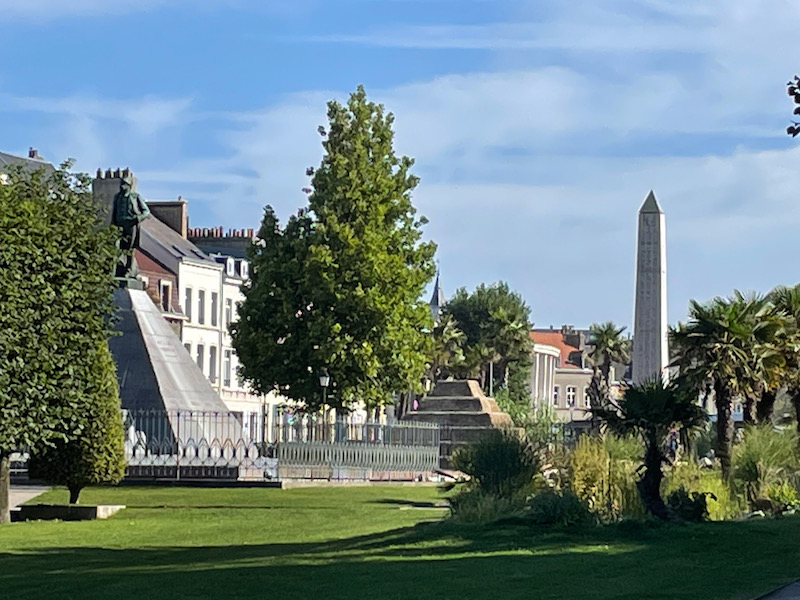Our Blog - Summer 2024 Trip - Boulogne-sur-Mer, France
We spent our "tourist" time in the Upper Town, the perfectly preserved medieval city atop a hill. The winding cobbled streets are topped by a 13th century castle that was built by a count nicknamed "the prickly bastard" (I will tell this story later). There are wide, walkable ramparts that are peppered with 17 towers, some of which you will also see later. The Lower Town, near the port and beach, is where we did our market shopping. Boulogne is an ancient town and was the main Roman port for trade and communication with its Province of Britain.
Porte Neuve, the "New Gate" is one of the various gates into the old city, with the central doorway dating from the 13th century. There were changes in the 16th century and the pedestrian crossing was added in 1895. There used to be a house on top but it was destroyed around 1866. The dome that you see behind it is from the Basilica of Our Lady of the Immaculate Conception.
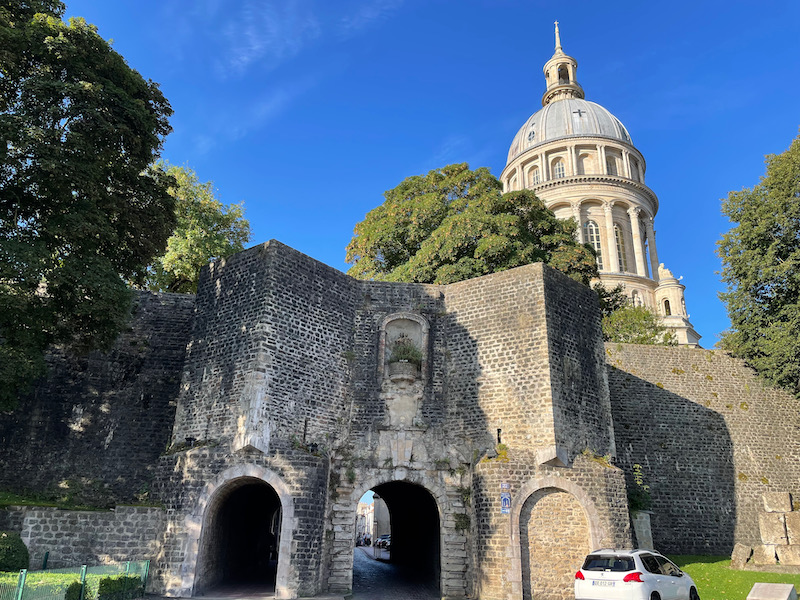
Basilique Notre Dame - Basilica of Our Lady of the Immaculate Conception - There is a long history here. Supposedly in 633, a miraculous statue of the Virgin and Child arrived in a wooden gondola and a chapel was built on the location of a Roman temple. This chapel was replaced by a stone church and Romanesque crypt in 1090. In the 13th/14th centuries, it was transformed into a Gothic building and a cloister was added. In 1308 the marriage between Edward II of England and Isabella of France, daughter of King Philip IV the Fair, was celebrated there. It didn't fare well in the 16th century and it was basically destroyed. It was reconstructed in the 19th century, drawing from the neoclassical style that was popular at the time. It has a very high dome (around 100 meters). It looks like the 12th century crypt can be visited (remains from the 3rd century, a Romanesque room from the 11th century, and Gothic elements from 12th and 14th centuries.
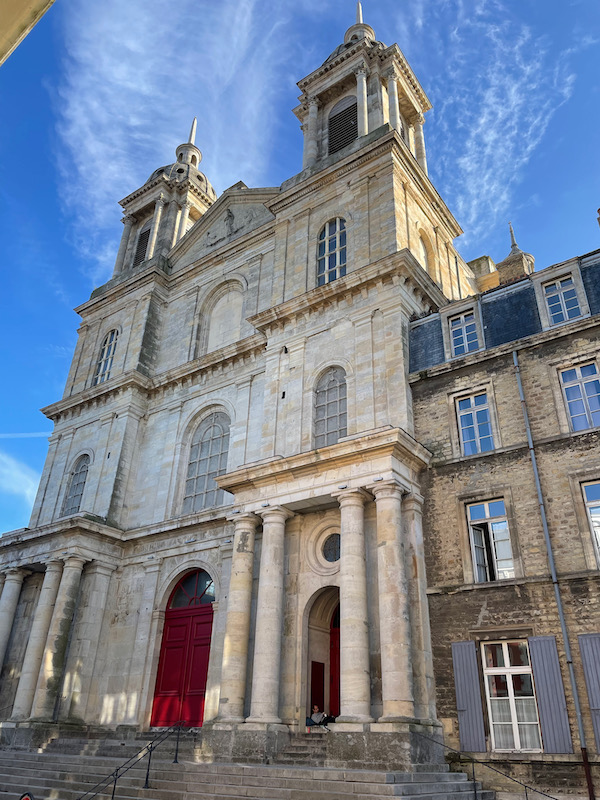
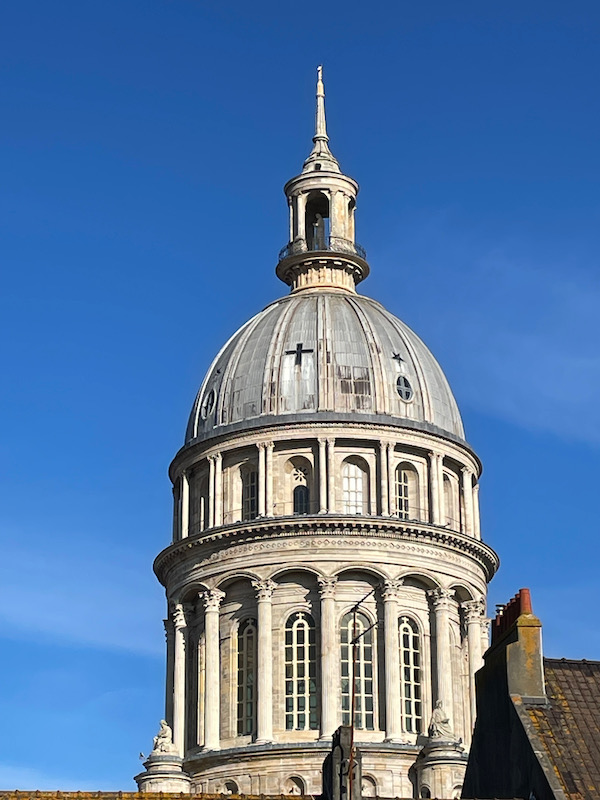
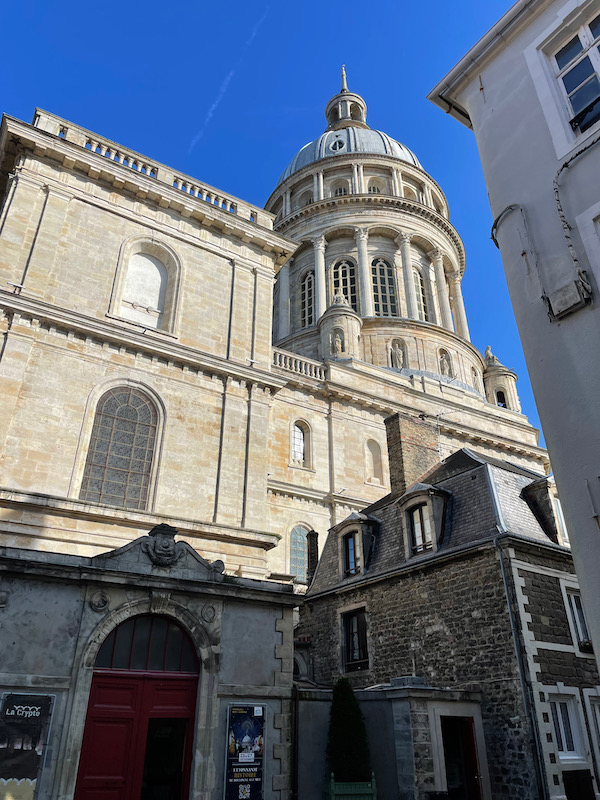
The interior aesthetics draws inspiration from the neoclassical style, very popular at the beginning of the 19th century. You can see the very tall columns supporting the nave and side aisles.
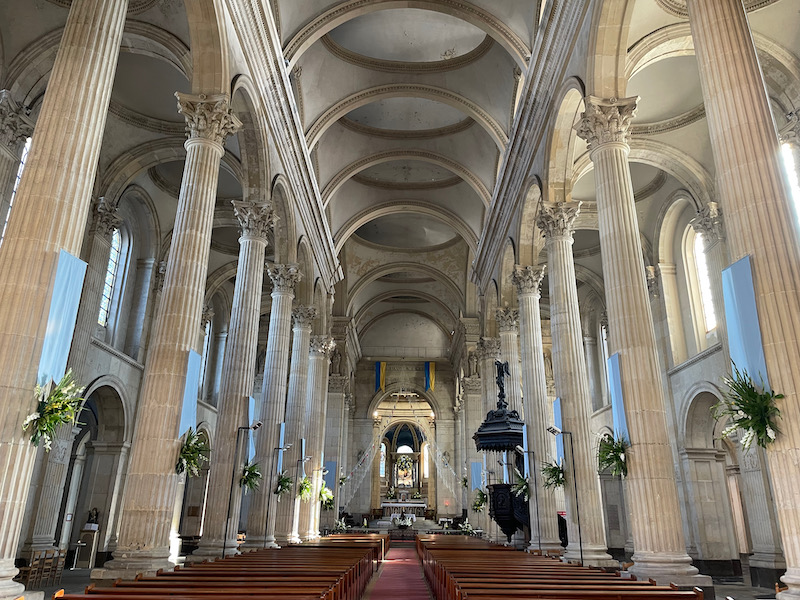
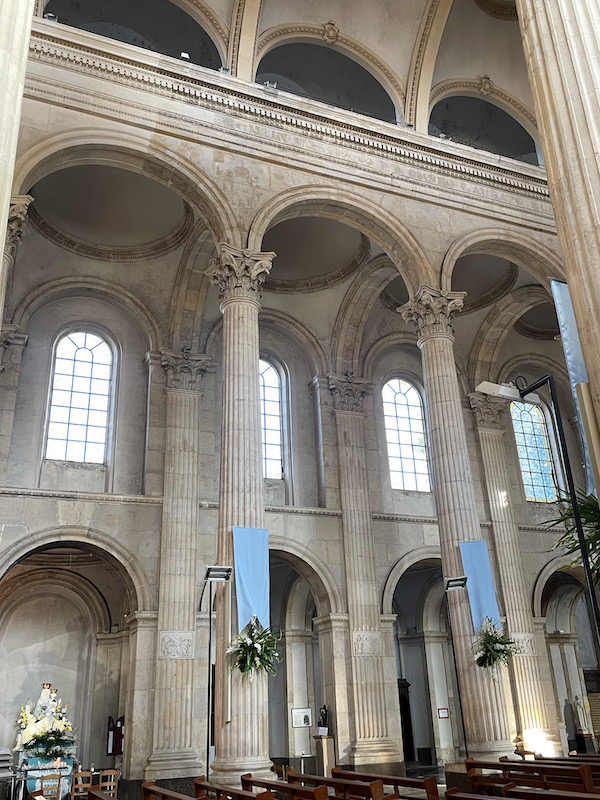
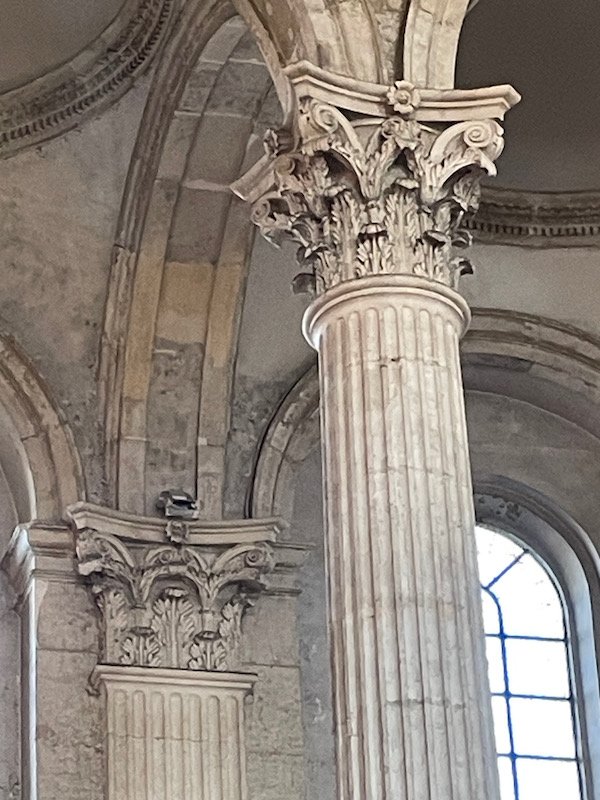
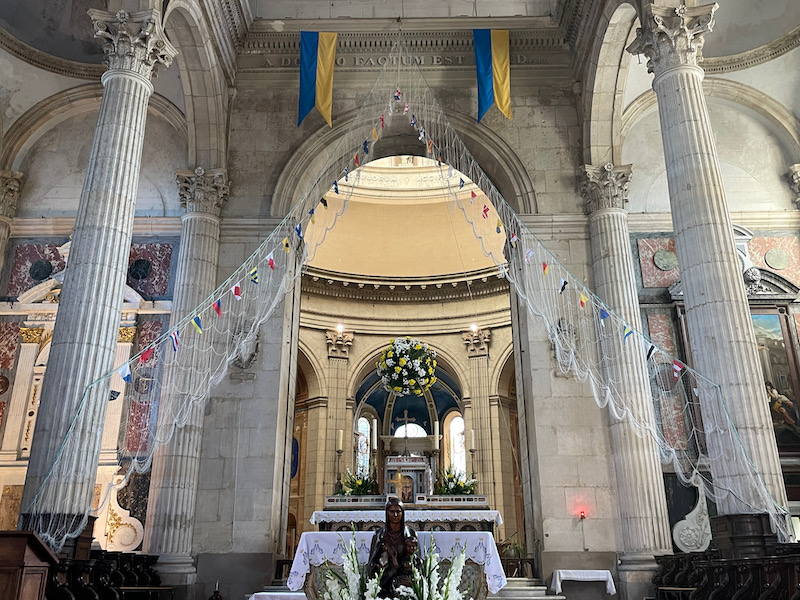
We took Lucy inside and she was in heaven with the texture of the rug on the floor.



The various altarpieces are also quite neoclassical, with Corinthian columns and pediments above.
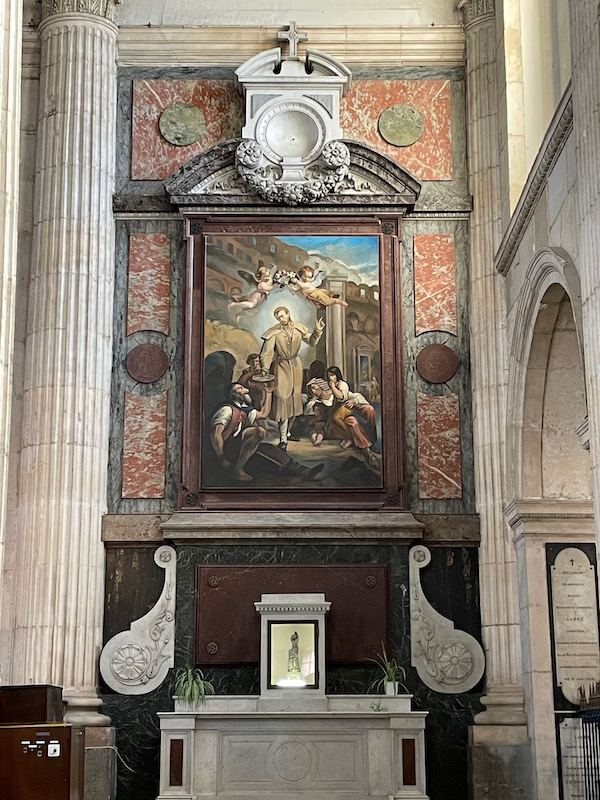
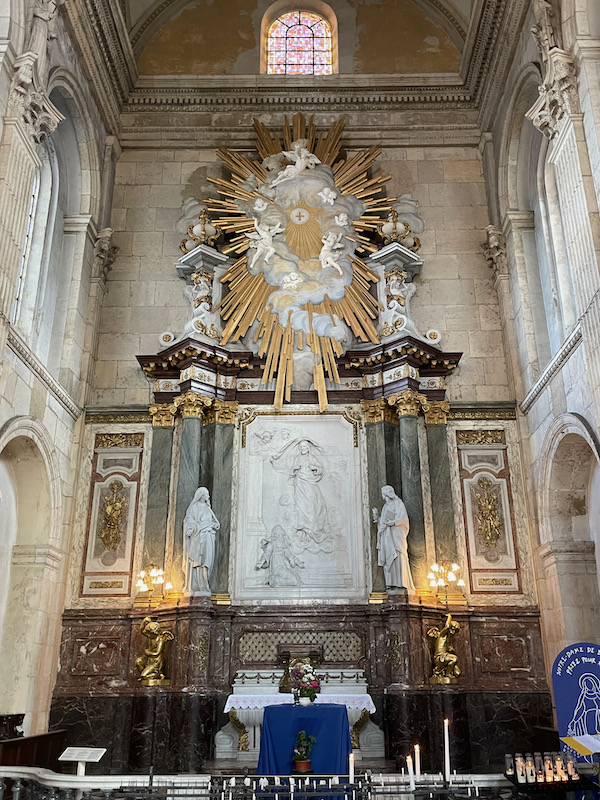
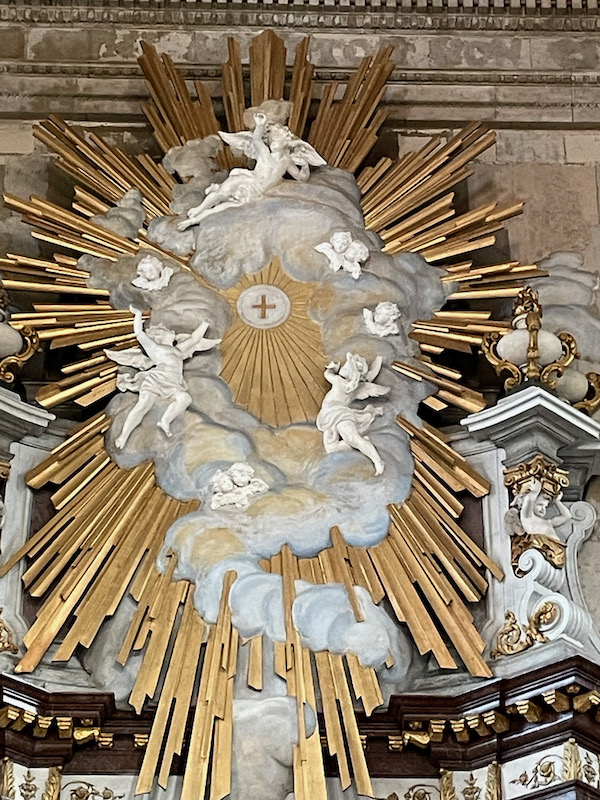
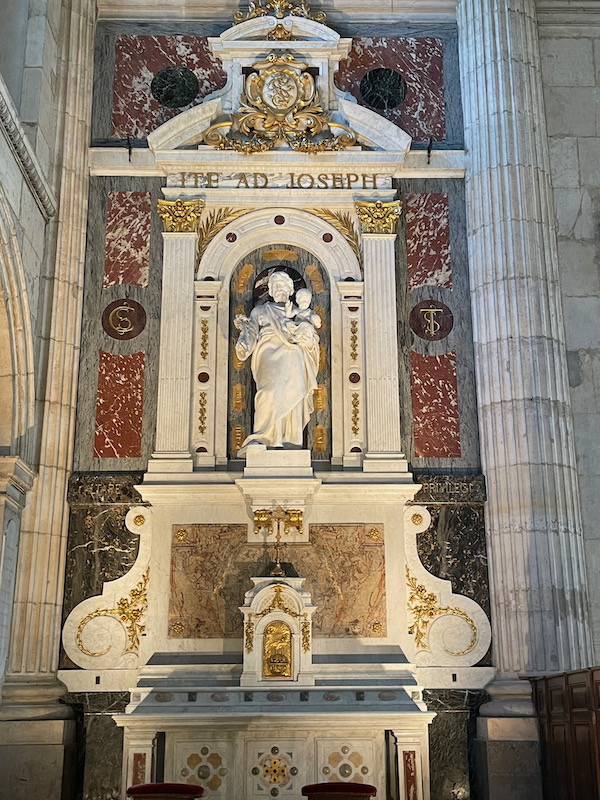
There were 6 chapels at the foot of the dome that were decorated by Charles Soulacroix in 1864-1865. Together, they form a harmonious picture of the life of the Virgin Mary. They are very vibrant, having been restored in 2023.
The first one is the Immaculate Conception. In the middle is the Blessed Virgin, surrounded by clouds with angels that form a sort of aerial grotto around her. She has the head of a serpent under her foot. It isn't that easy to see, but below her are two angels dressed in warrior armor, chasing away the evil spirits. In the dome is God with 2 angels.
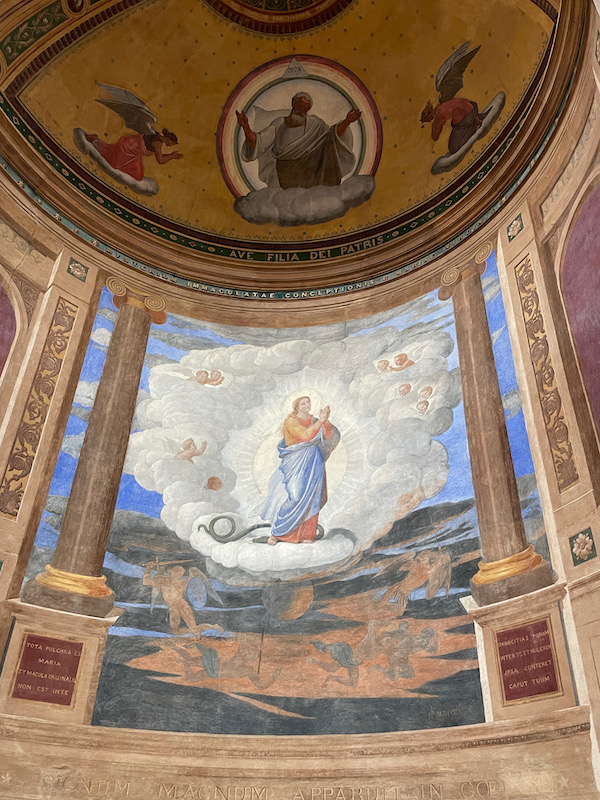
The Nativity shows women preparing to care for the newborn child, unaware of the mystery that has just taken place. The dome shows the child seated on a throne, surrounded by 2 angels who are throwing flowers.
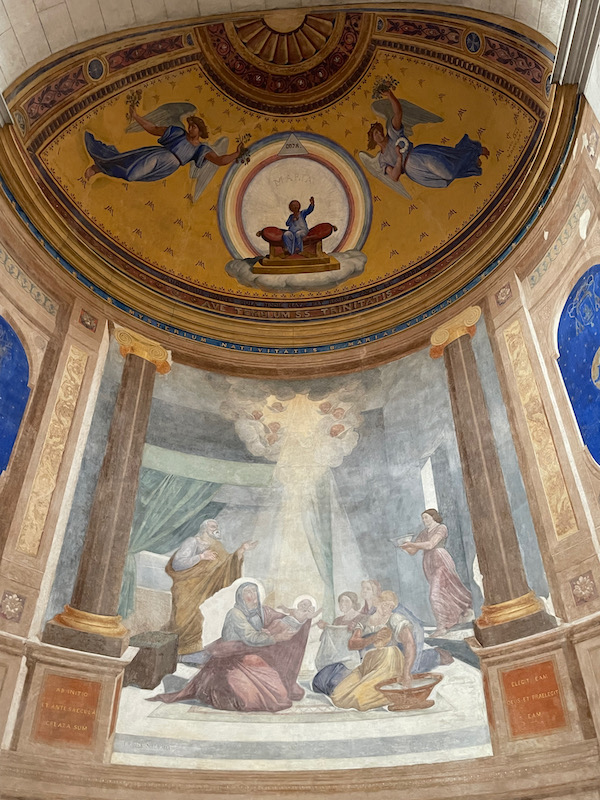
The Presentation at the temple, showing the Virgin coming forward, wearing a crown of flowers on her head and holding a candle in her hand. The high priest comes to receive her.
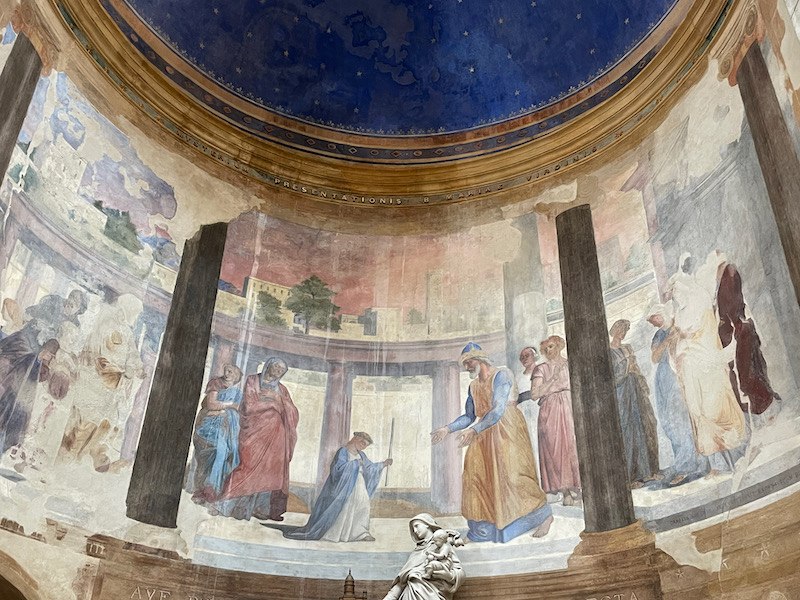
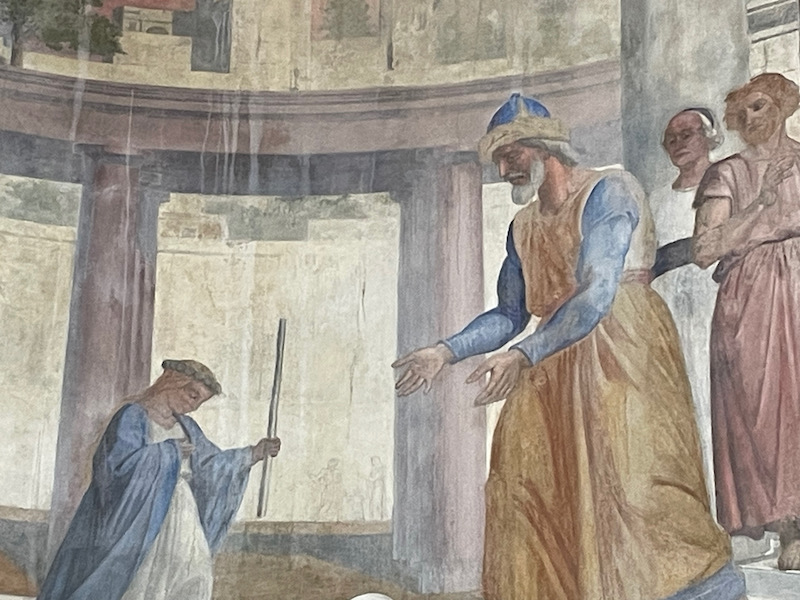
In the fresco of the Annunciation, an angel descends from heaven, shedding a ray of light on her. Informed of the grace given to her, Mary bows and humbles herself before the divine message. In the dome, a painting representing the coming of the Messiah shows Jesus Christ, extending his arms, descending from heaven to earth surrounded by angels.
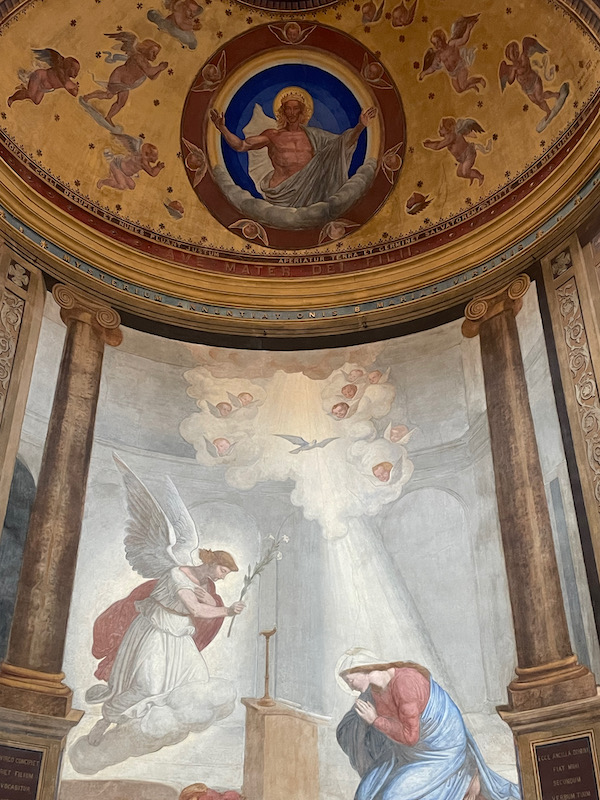
The visitation shows Saint Elizabeth going to meet the Holy Virgin, with angels in the dome.
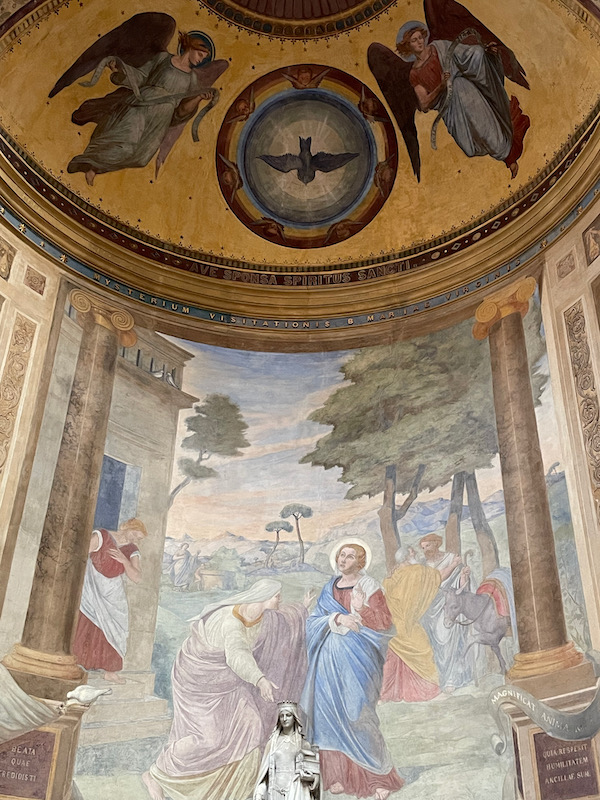
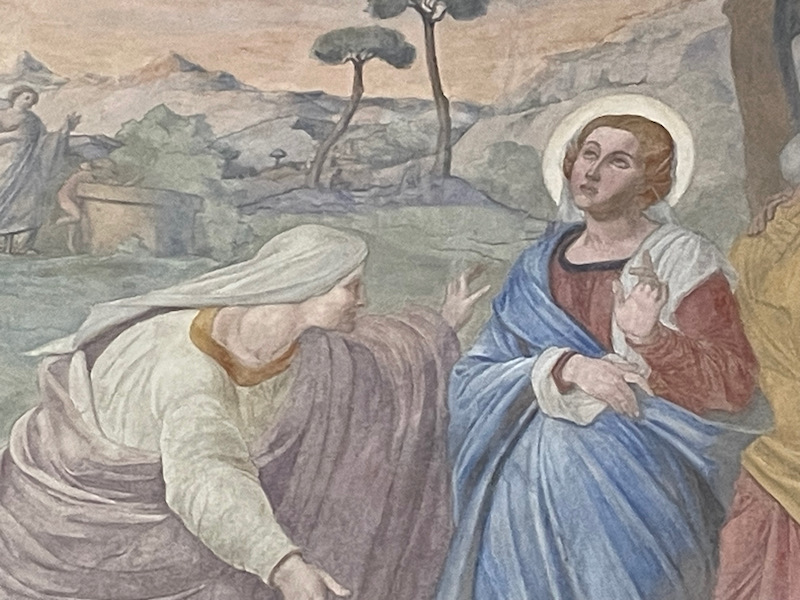
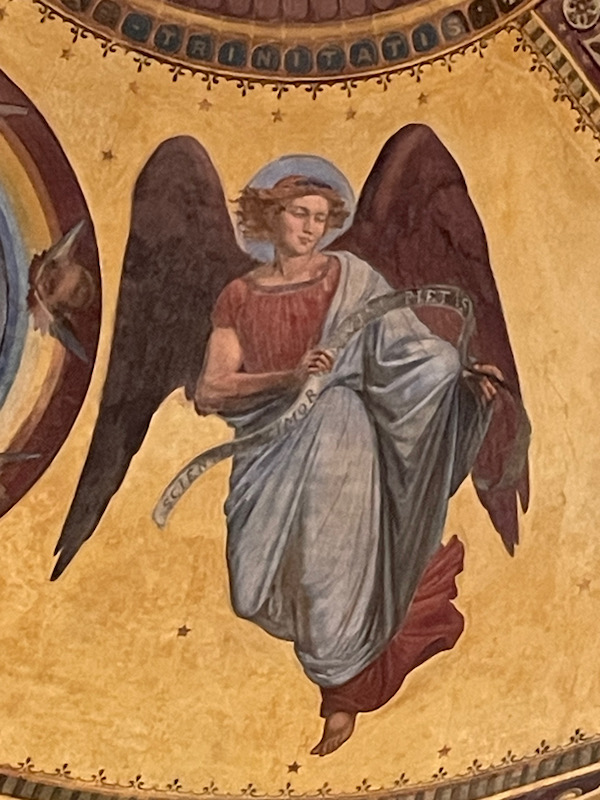
The fresco of the Purification hasn't been restored, so this is what the others would have most likely looked like prior to the restoration. You can make out the inside of the temple (with the columns), but most of the people aren't really recognizable in the middle.
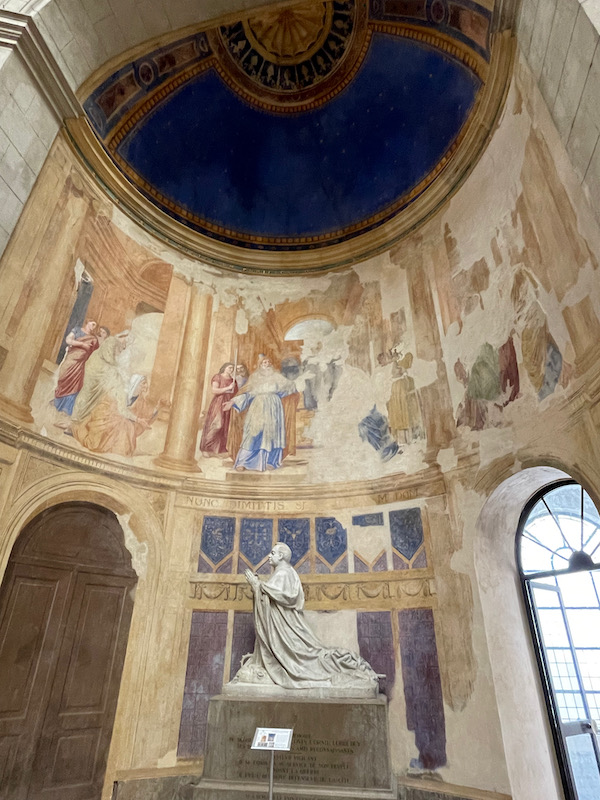
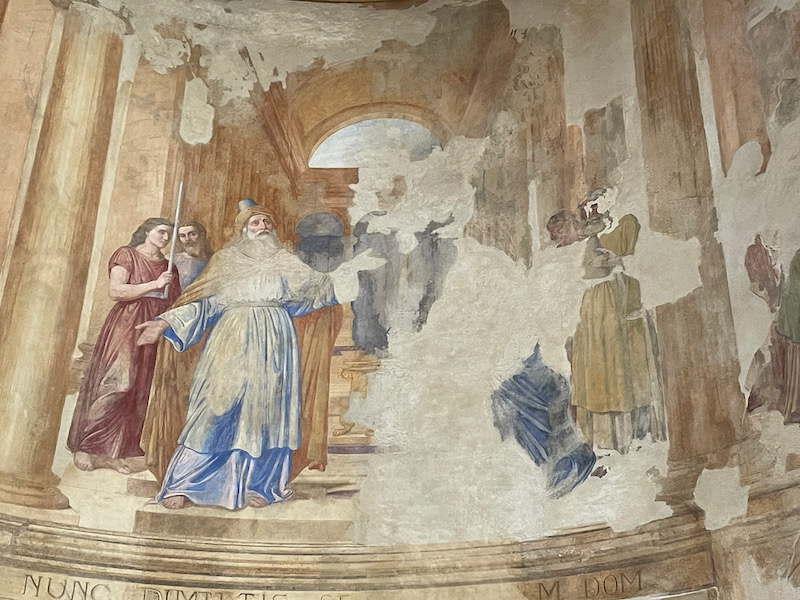
There are also several altars in the chapels surrounding the dome. This one has a bas-relief in the middle showing the legend of the statue of the Virgin and child arriving by boat.
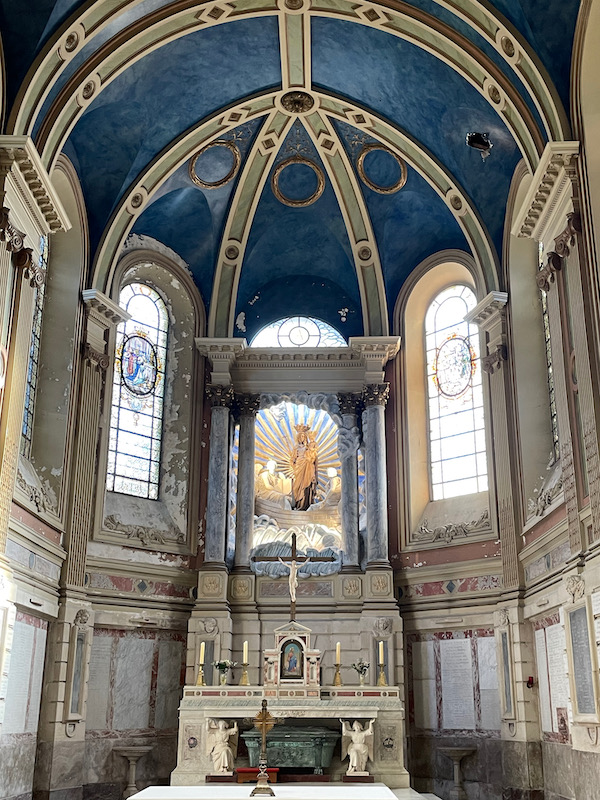
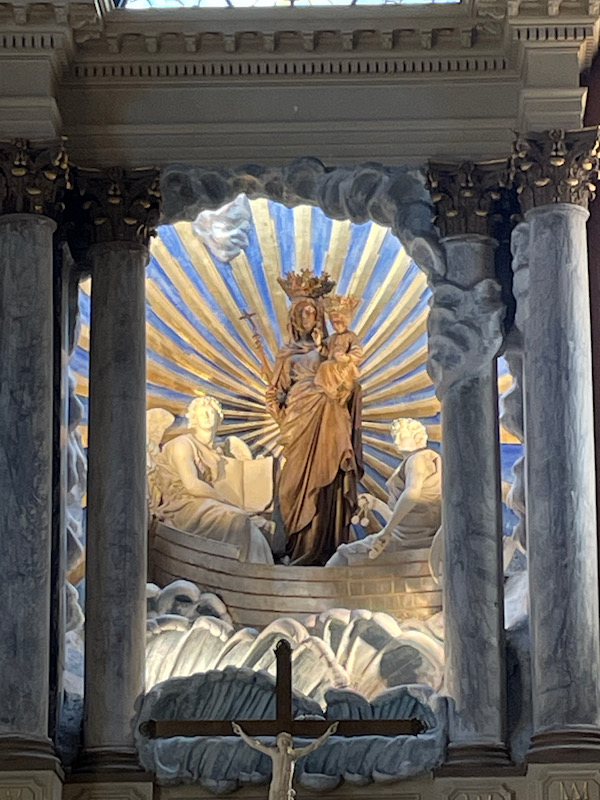
The Torlonia altar was made at the Vatican and was given as a gift in 1866 from the Italian Prince Alessandro Torlonia. One side features the 4 fathers of the church and the other shows Christ and the Evangalists. It arrived here in 1866 in 9 carts pulled by 30 horses. It is composed of 147 different types of marble and precious stones. The panels, while they look like paintings, are actually mosaics made up of thousands of tiny pieces of marble assembled together. This is the back side of the altar, showing Christ surrounded by the 4 Evangelists: Matthew, Mark, Luke, and John.
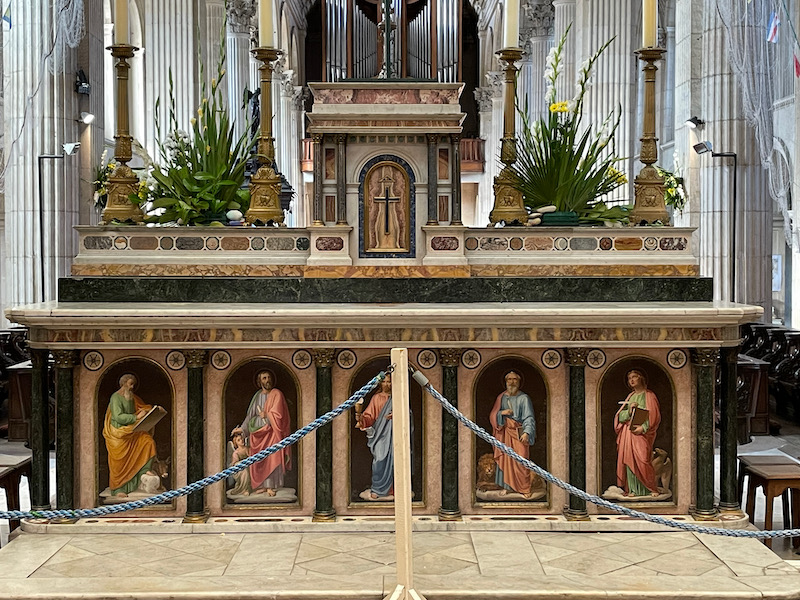
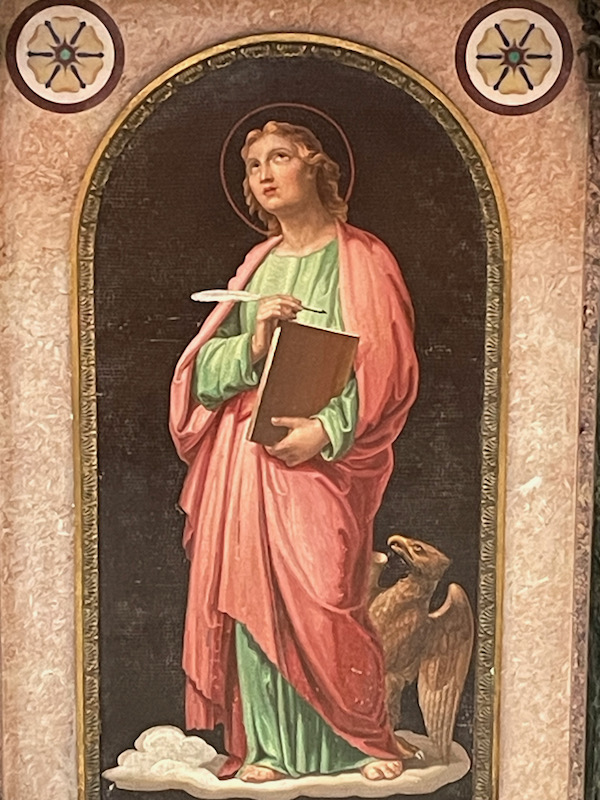
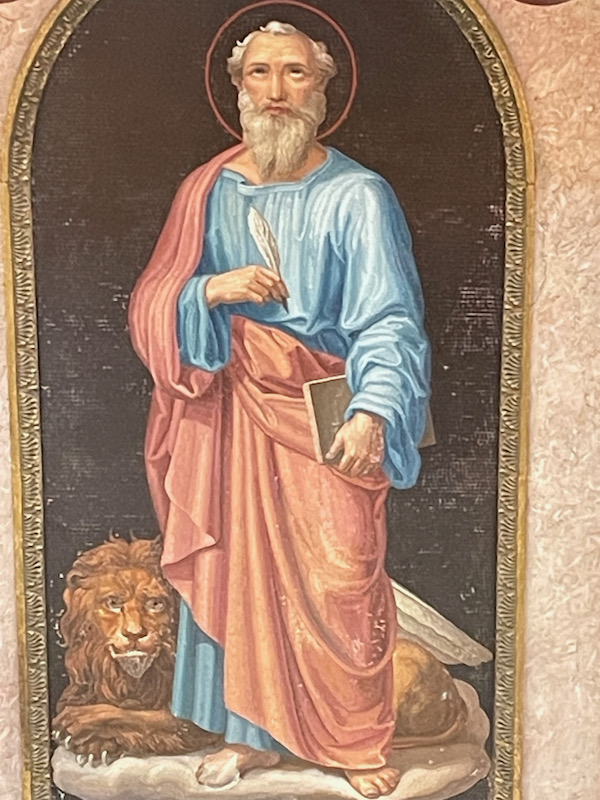
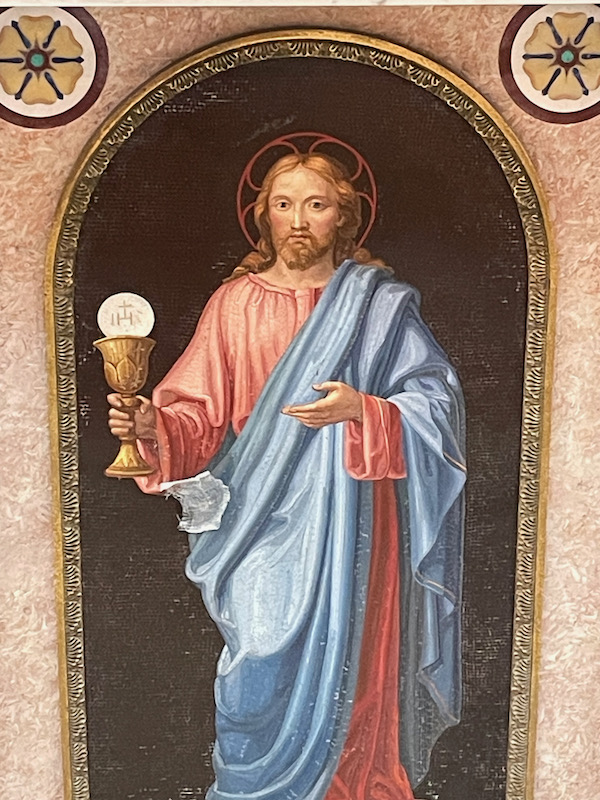
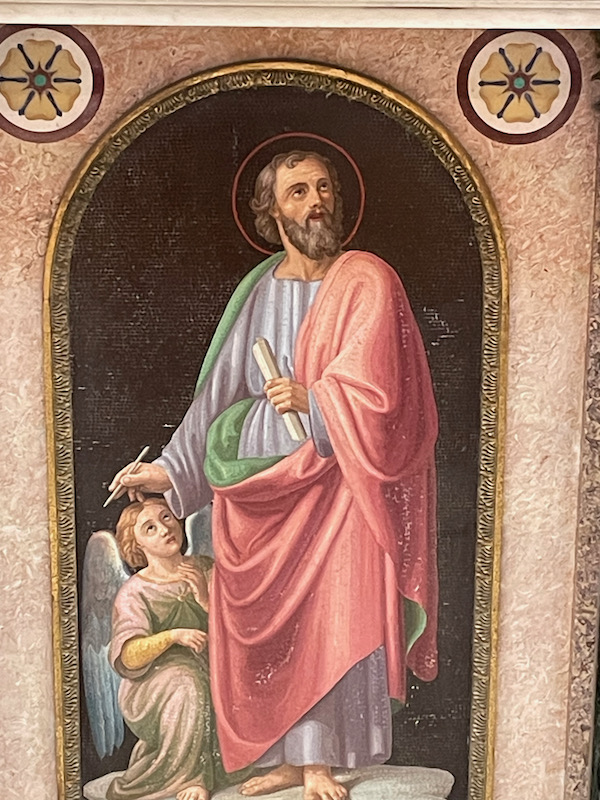
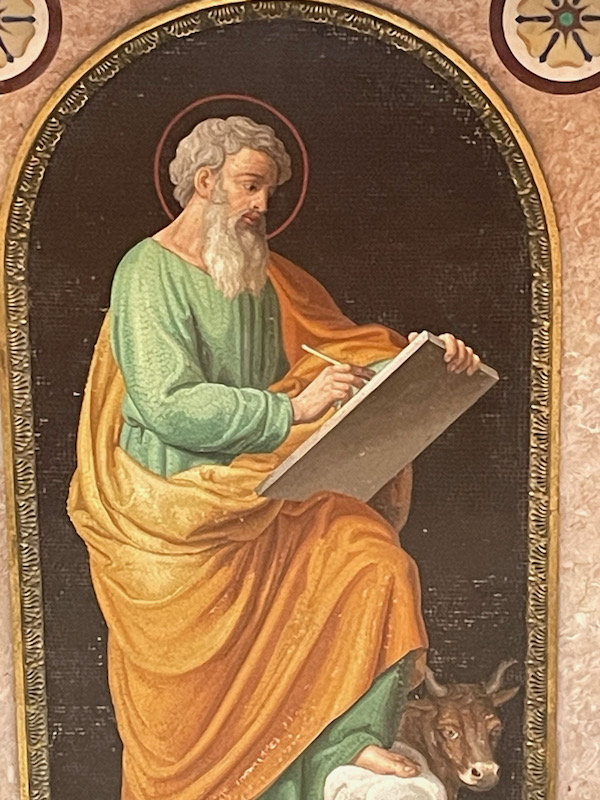
This sculpture of King David used to be on top of the organ case, which was destroyed in 1944.
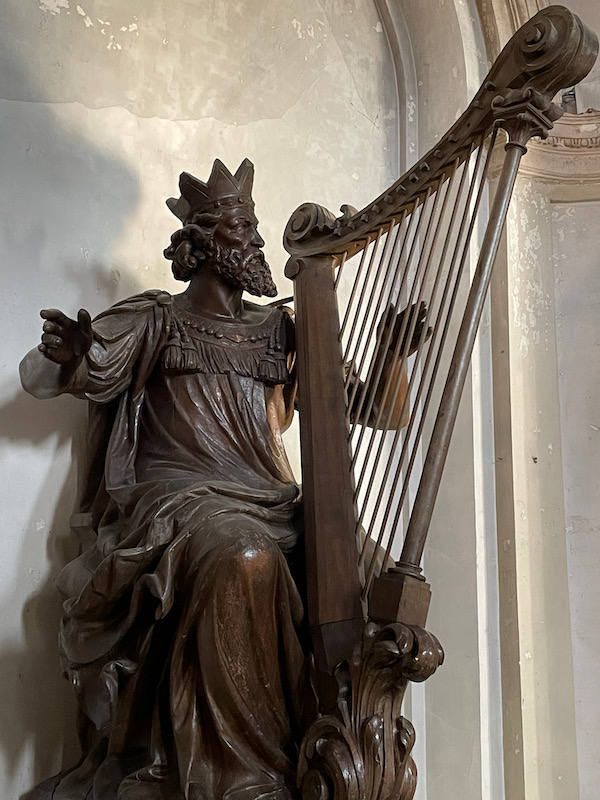
This is an old keep erected in the 12th century for a count's castle that was here. It was built from 1191-1214 by one of the most powerful lords of the area. The castle would have had other buildings, more spacious and comfortable, but built out of wood which burned down at some point in time. The next Count of Boulogne built his castle on the other side (the chateau that you will see next) and gave this to the town for a belfry. The octagonal part on the top was built in the beginning of the 18th century to replace a slate spire destroyed in 1712 by a fire.
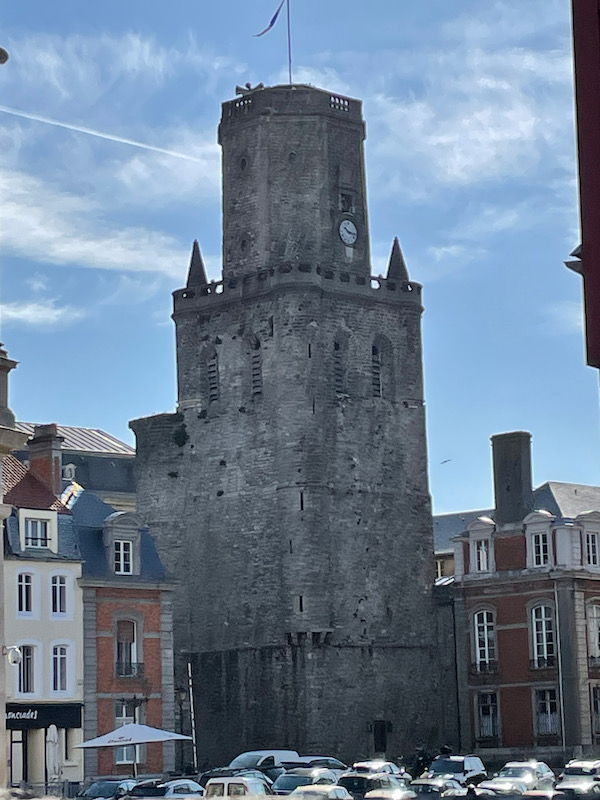
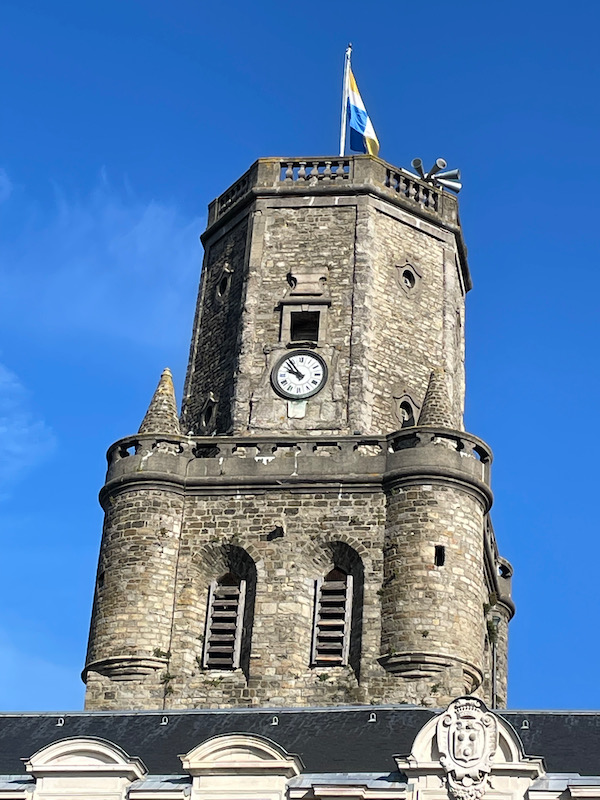
The Chateau d'Aumont dates is from the 1st half of the 13th century, then extensively remodeled in the 16th century. This is the "new chateau" that was built by the "spiky bastard", Philippe Hurepel of Clerment. The "prickly" came from his spiky hair and the "bastard" because he was the illegitimate son of King Philip II. The current chateau was built during the medieval period but its foundations date back to Roman times. The large gate to enter from the town has 2 cylindrical towers. There are 9 additional towers around the curtain walls, which is equipped with a walkway. You can also see the large ditch that provided additional defenses. Inside, there is a circular courtyard surrounded by various buildings. Today it is a museum so we just checked out the exterior of the buildings and then headed on.
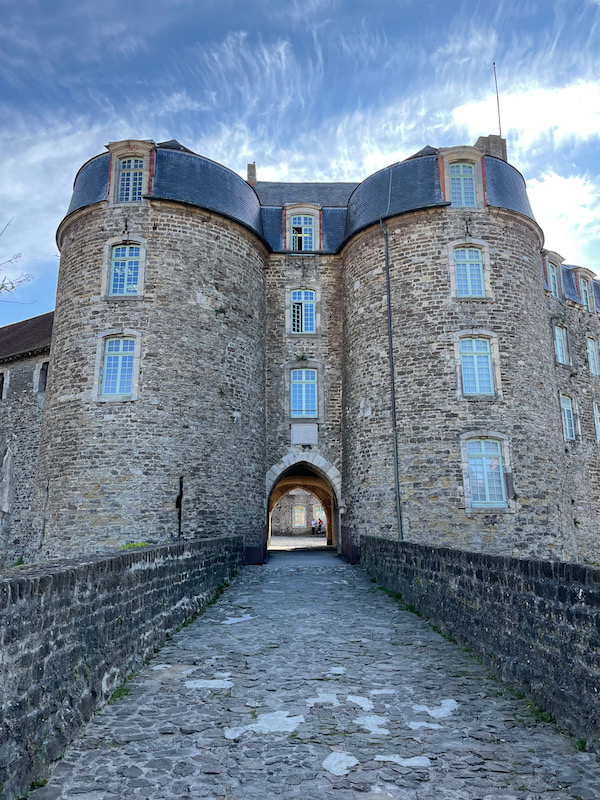
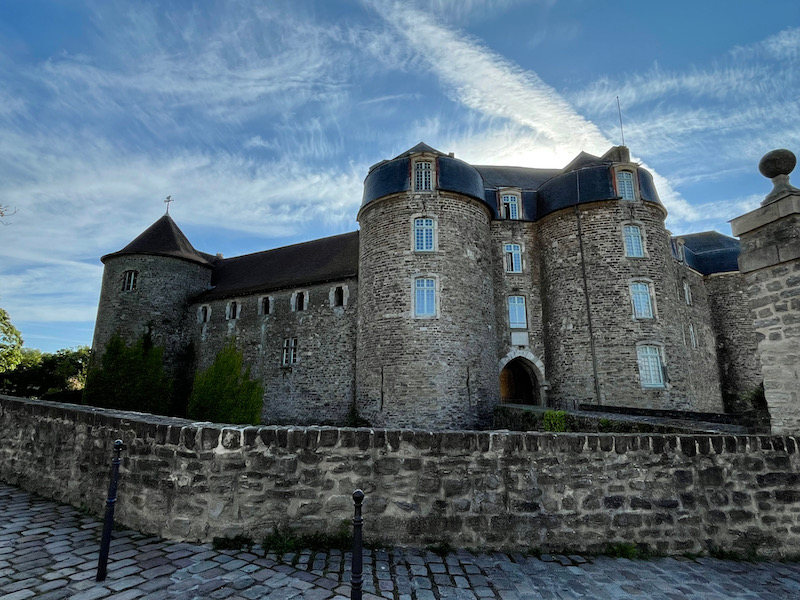

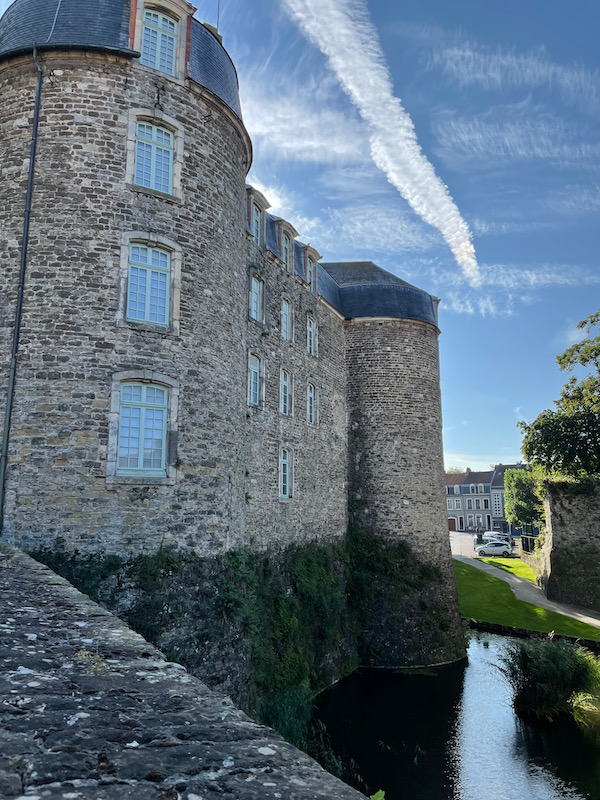
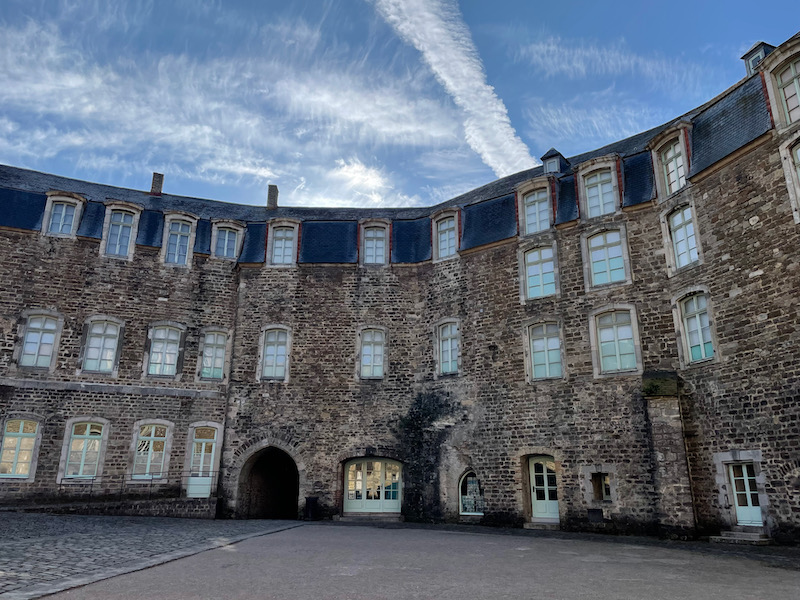
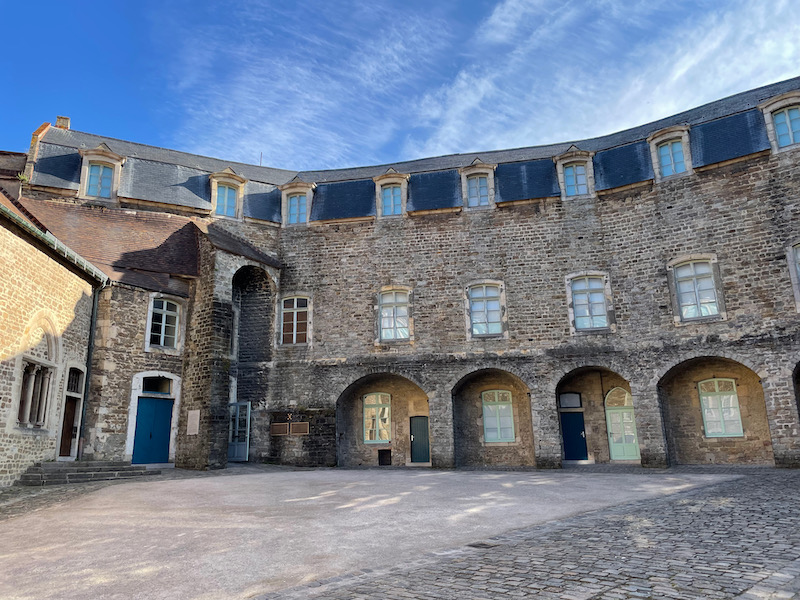
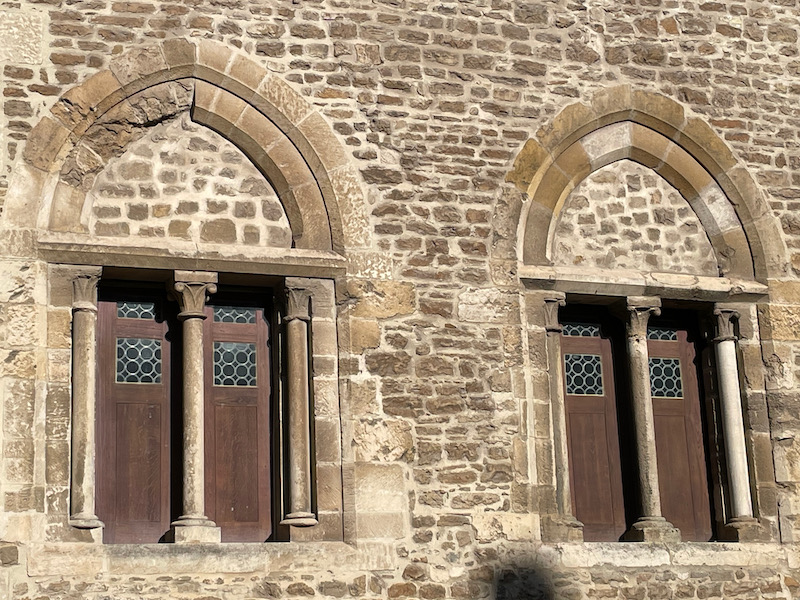
The upper town has lots of these quaint little cobblestone streets with shops and cafes, like this Pharmacy, founded in 1847.
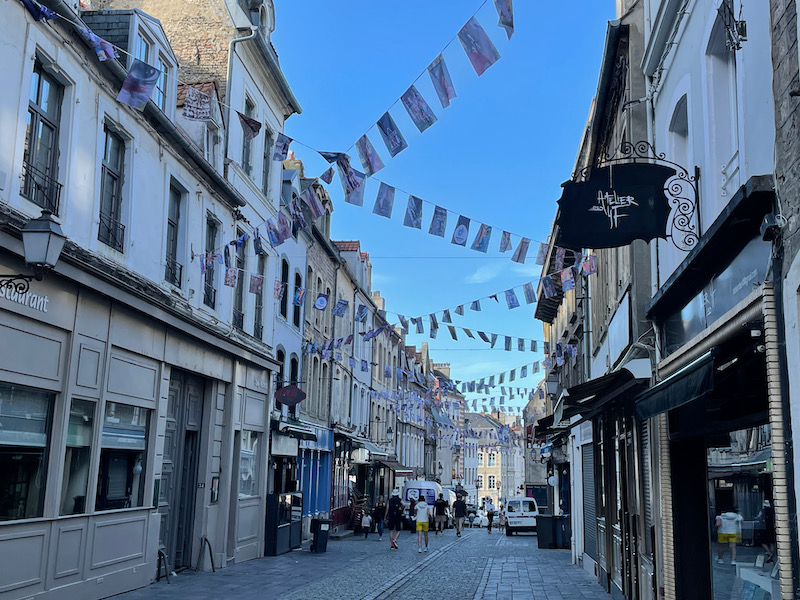
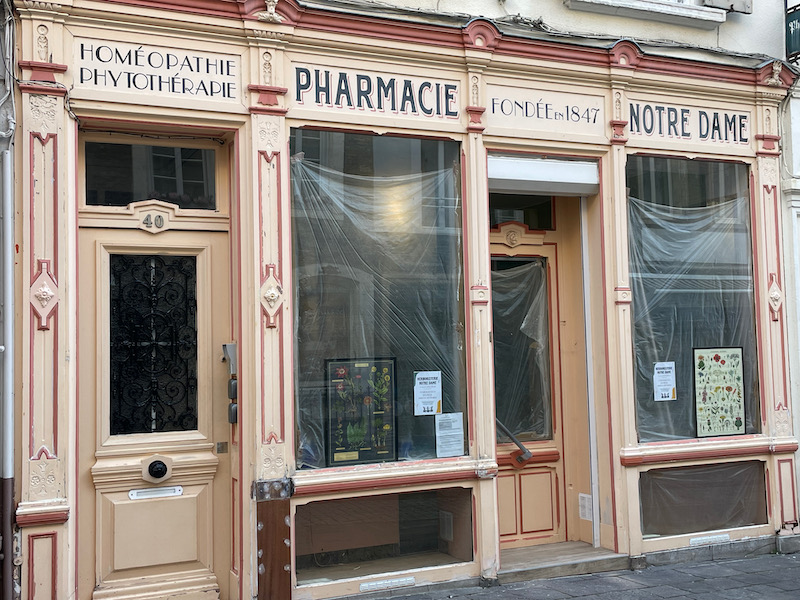
In front of the town hall, a "jardin emphemère" (a temporary garden) had been installed for the summer, entitled "Rhapsody in Blue". The garden is filled with various types of flowers and prints of artwork that is mainly in blue, like The Starry Night by Vincent van Gogh.
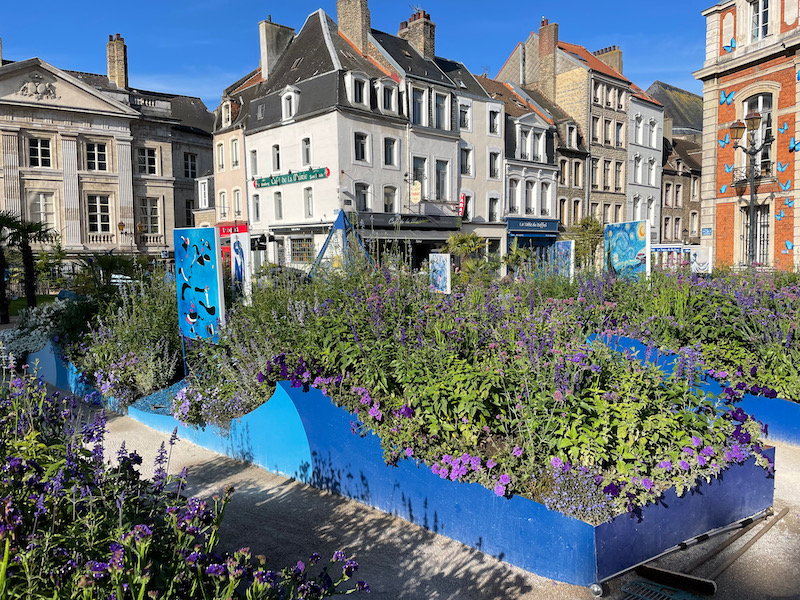
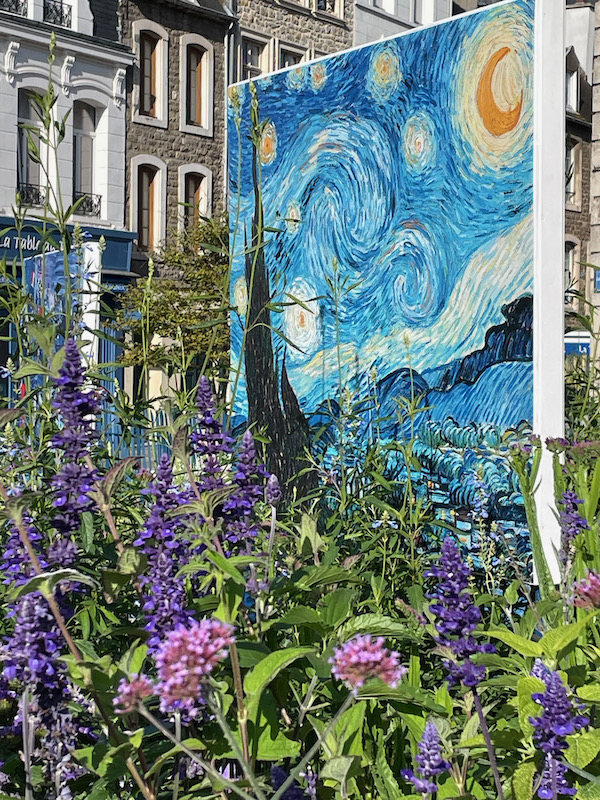
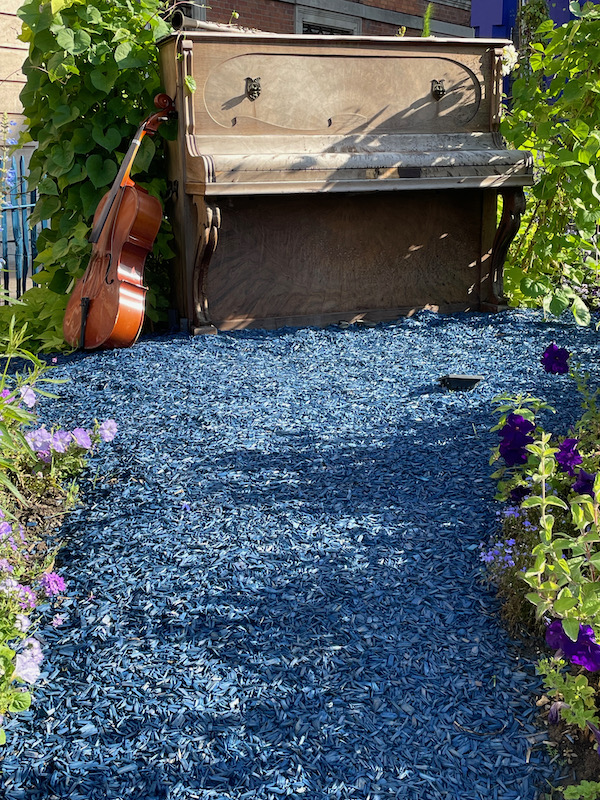
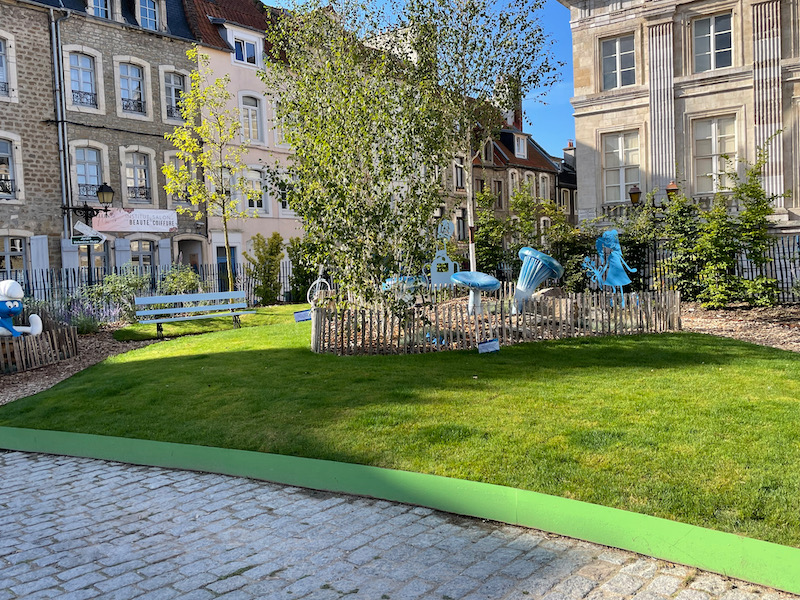
The Imperial Palace of Boulogne-sur-Mer, also called Hôtel Desandrouin, is a grand mansion that was built in 1777. At the beginning of the 19th century, the residence was used as the headquarters of the General Staff of the Grande Armée. The First Consul and then Emperor Napoleon Bonaparte stayed there in 1803, in 1810 (with the Empress Marie-Louise of Austria), and in 1811.
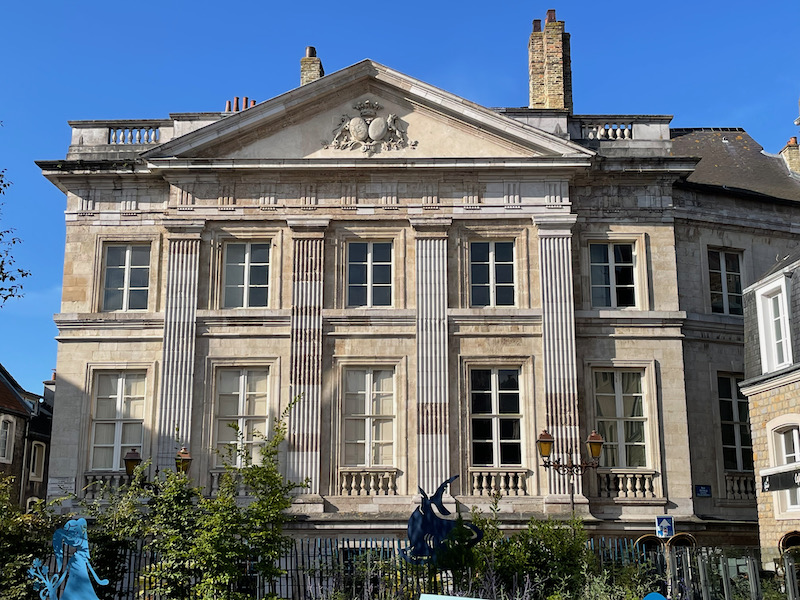
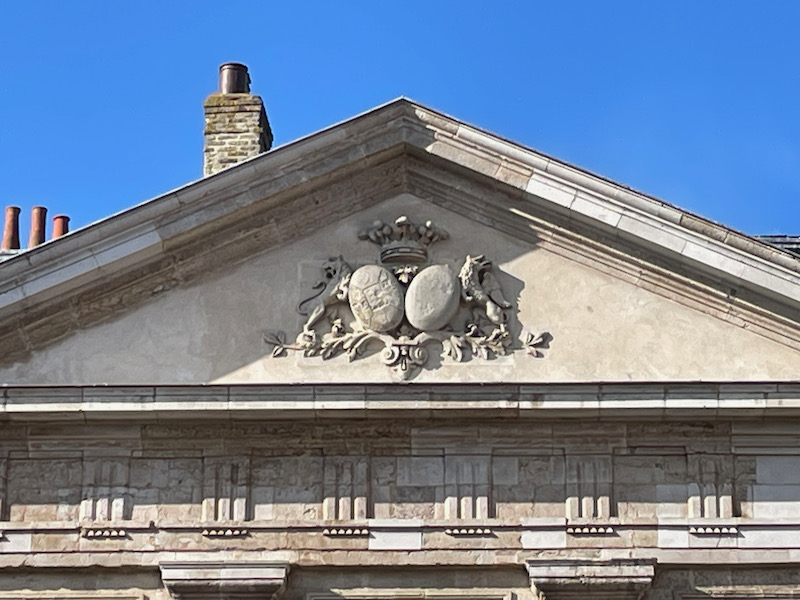
The Palais du Justice (courthouse building) was built in 1850 in a Neoclassical style. It has an ordered facade with Doric columns on the ground floor and Ionic columns on the top floor. On the pediment, Justice is surrounded by 4 other allegories representing Commerce, Industry, Crafts, and the Arts. The niches on the 1st floor house statues of Charlemagne and Napoleon 1st.
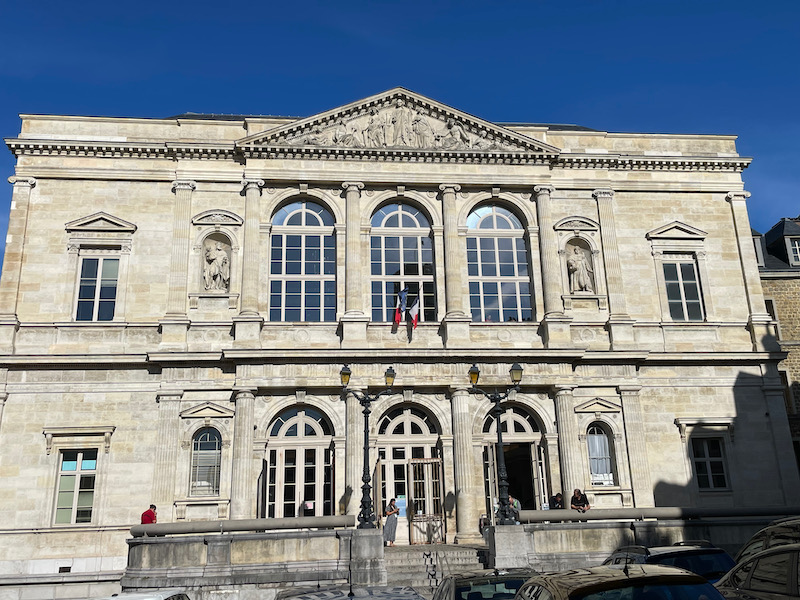
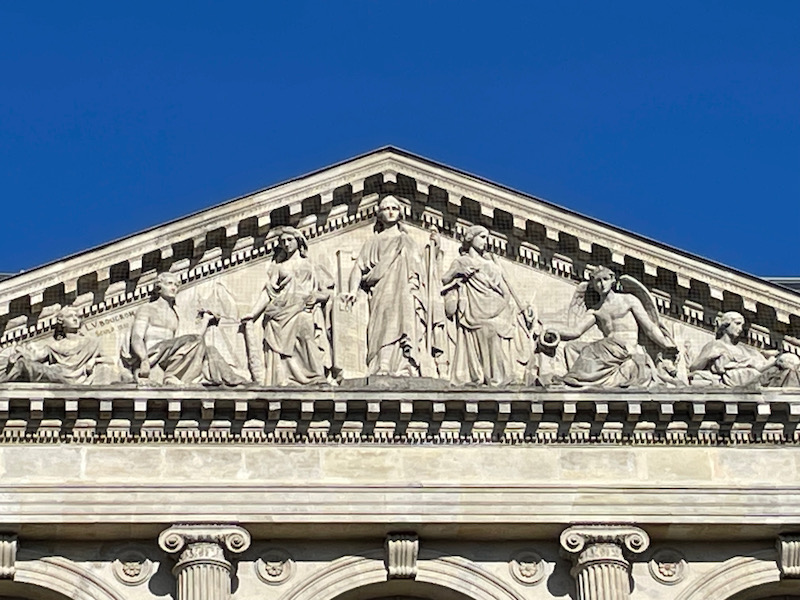
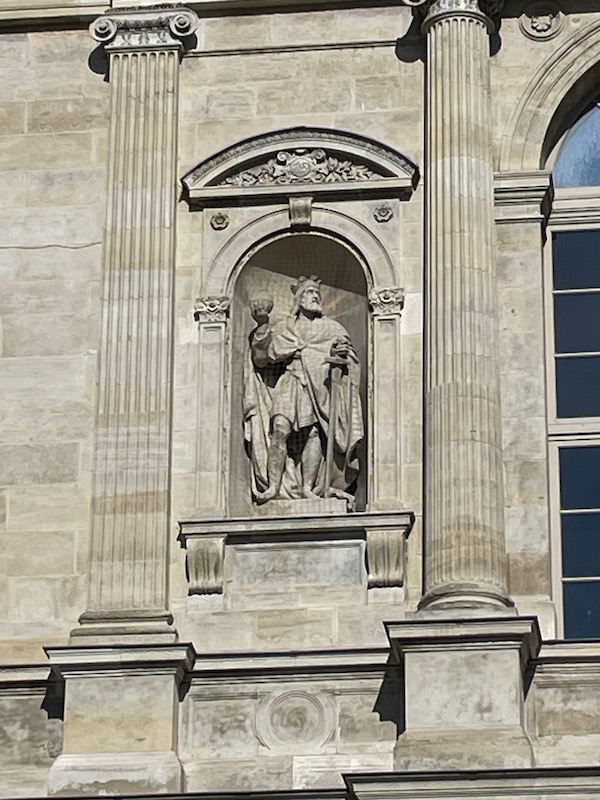
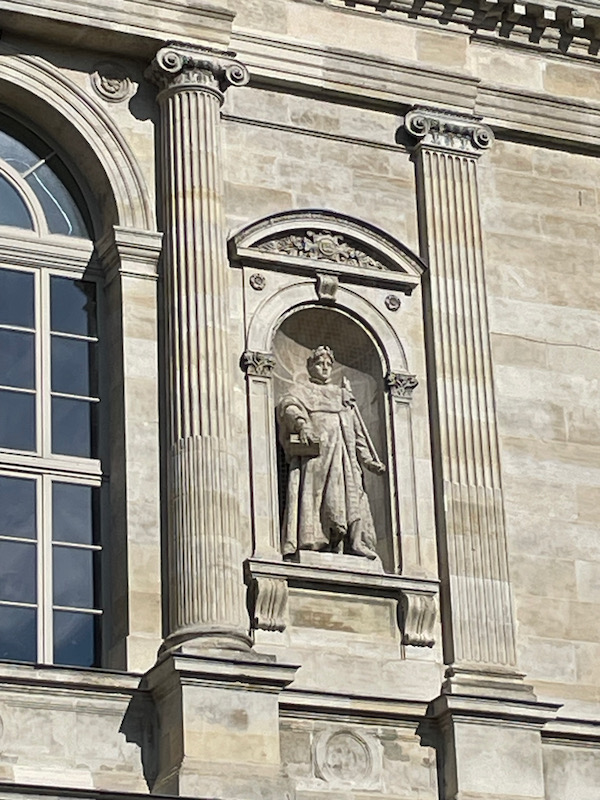
The Porte des Dunes is part of Philippe Hurepel's ramparts, built between 1227 and 1231. It has a vaulted passage between two towers, defended by an imposing bastion. Above the vaulted passage is a ogival niche with a sculpture with the Virgin and Child sitting on a boat. According to an ancient tradition, during the reign of Dagobert around 636, a boat arrived in the port of Boulogne with no crew, carrying only a statuette of the Virgin and Child. It was carried by the townspeople to a chapel that today is where the Basilica of Notre-Dame-de-l'Immaculée-Conception is. The 3rd picture shows the ramparts and towers from the outside of the walls.
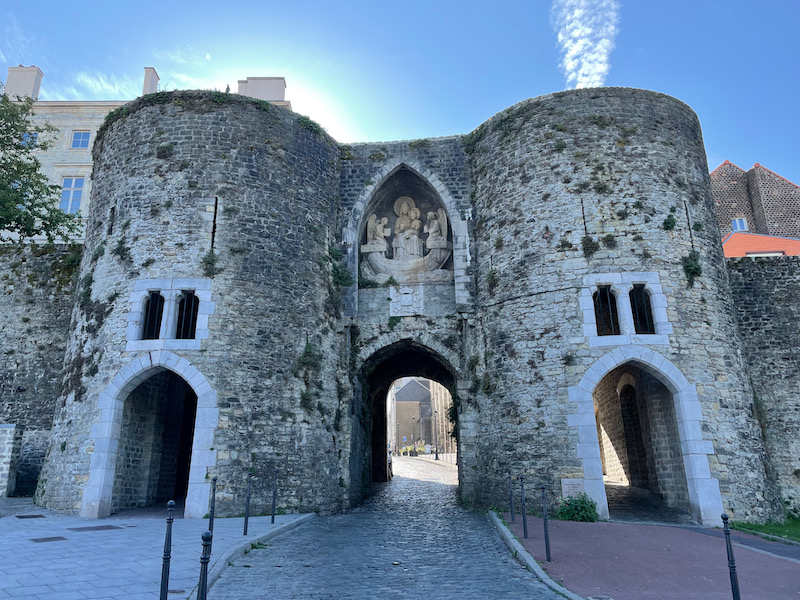
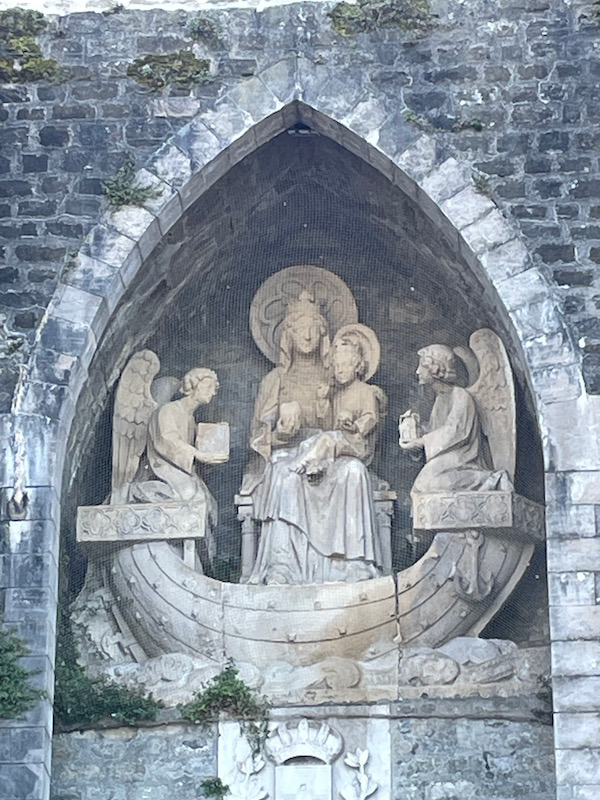
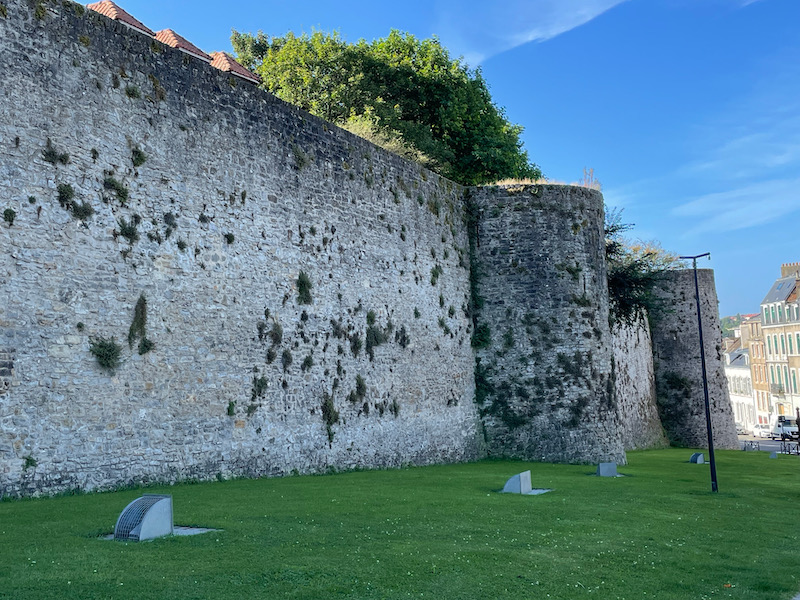
Another gate in Philippe Hurepel's ramparts, Porte des Degrés was also built between 1227 and 1231. It was damaged during a fire in 1587, which is why what you see on the inside of the gate is in ruins. From the outside, you can see the typical plan of gates in the fortifications: two massive U-shaped towers projecting from the wall surround a gate passage.
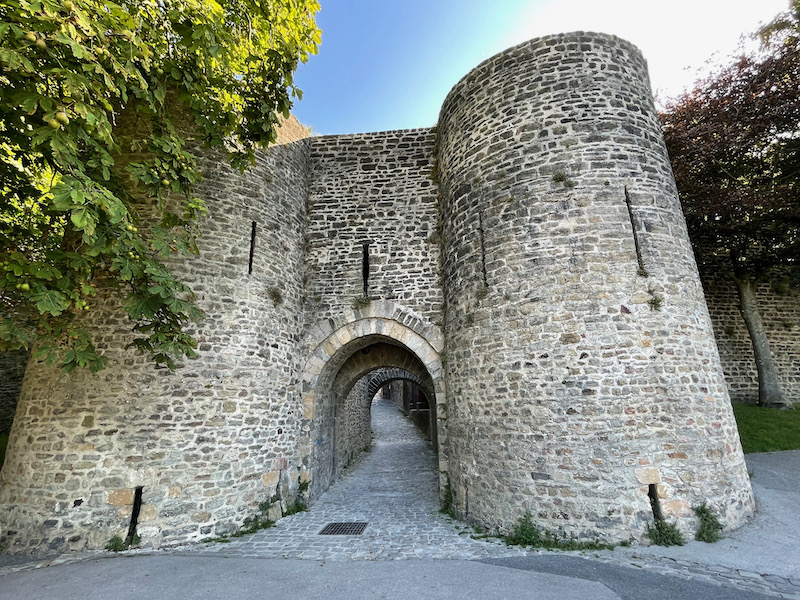
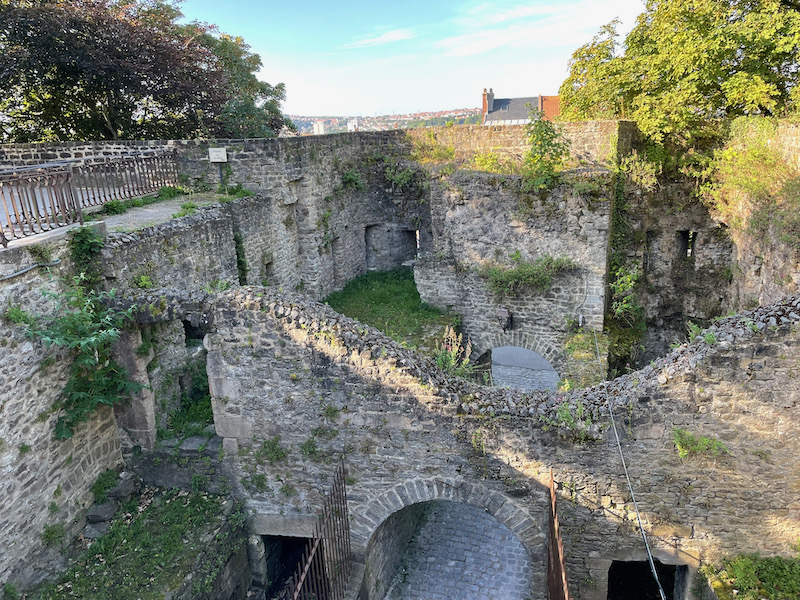
The ramparts are supposedly the best-preserved ramparts in Northern France. Lucy led us on a walk around a path that has been built at the top of the ramparts. There are quite a few remains of semi-circular towers, some higher than others, including the 3rd picture, which is what remains of the Tour du Conseil (looking from the inside).
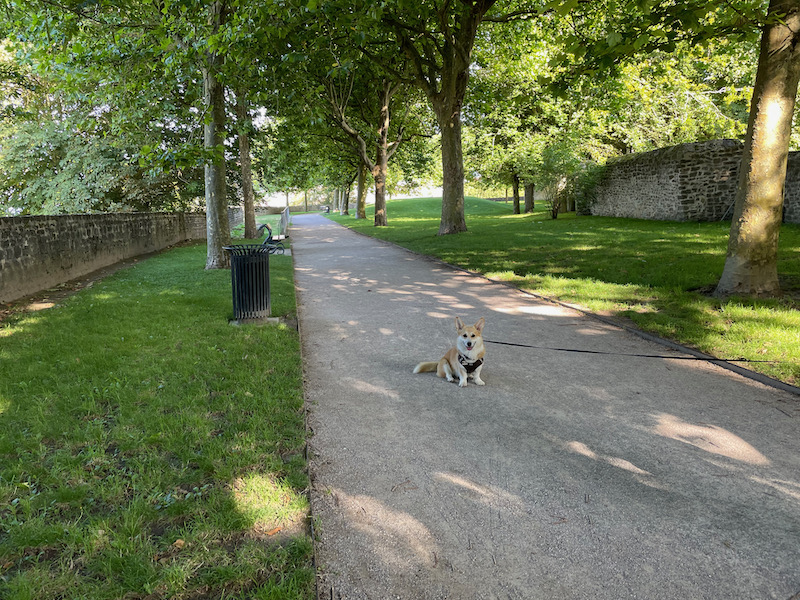
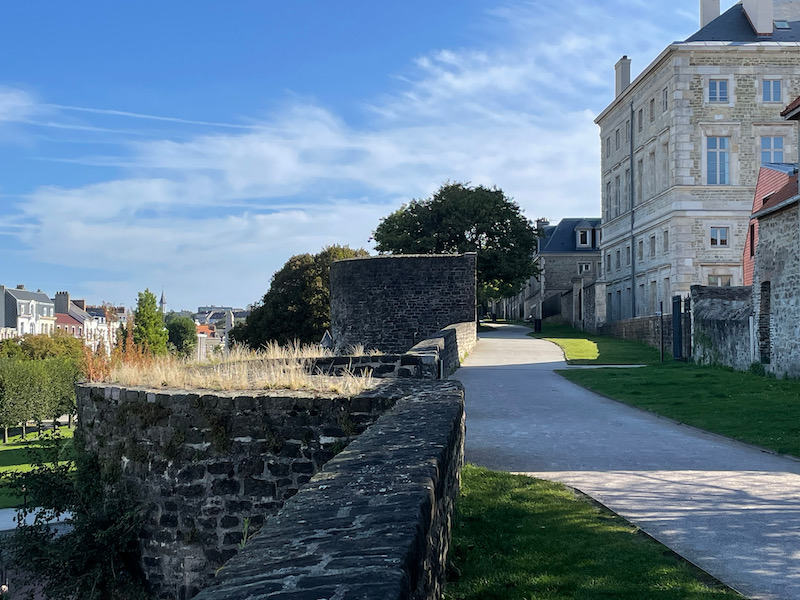
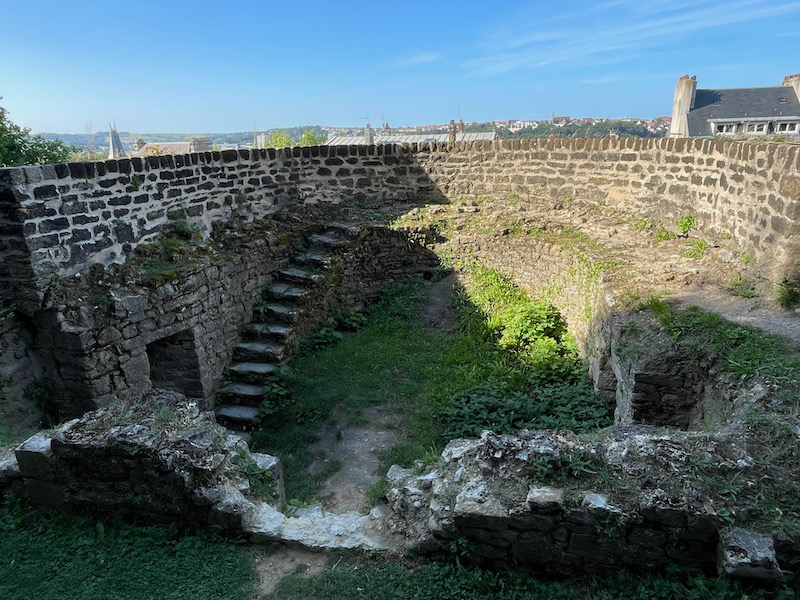
Auguste Mariette was born in Boulogne-sur-Mer in 1821 and was a pioneer of modern Egyptology, continuing the work of Champollion (the decipherer of Egyptian hieroglyphs using the Rosetta Stone). A large part of the collections of the Louvre come from him, and he was assistant curator there in 1855 before going to the Cairo Museum. This monument, just outside of the Porte des Dunes, is a stone pyramid with 2 sphinxes, topped by a statue of Mariette. Beside it is a 12-meter-tall obelisk that is a smaller copy of the Obelisk in the Place de la Concorde in Paris.
